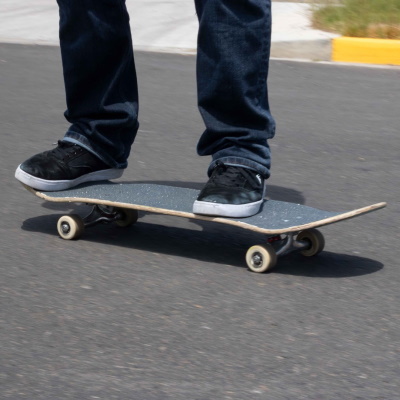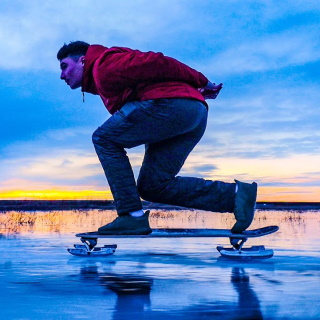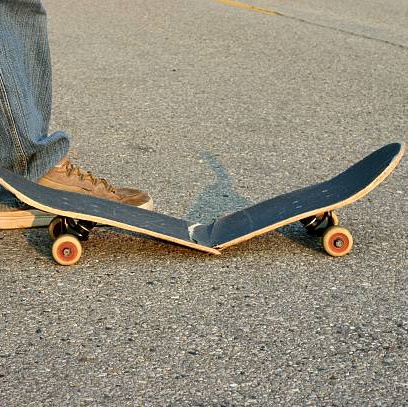How to Ride a Skateboard (Step by Step)
Skateboarding is a fun and popular activity that can be enjoyed by people of all ages. Whether you're a beginner or an experienced skateboarder, there's always something new to learn and explore. If you're new to skateboarding and wondering how to get started, this step-by-step guide is here to help. We'll walk you through the basics of riding a skateboard, including how to stand, push off, glide, turn, and carve. We'll also cover some advanced tricks and techniques, as well as provide tips and resources for further learning. So, if you're ready to learn how to ride a skateboard, read on!
Step 1: Gather the necessary equipment
Before you start learning to ride a skateboard, it's important to gather the necessary equipment. The most important piece of equipment is, of course, a skateboard. You'll need a skateboard with a deck, wheels, and trucks. The deck is the flat part of the skateboard that you stand on. The wheels are attached to the trucks, which are the metal pieces that connect the wheels to the deck. When choosing a skateboard, consider your skill level, style of riding, and personal preferences. There are many different types of skateboards available, so take some time to research and find the one that's right for you.
In addition to a skateboard, you'll also need some protective gear to help you stay safe while riding. This includes a helmet, elbow pads, and knee pads. Wearing a helmet is especially important to protect your head in case of a fall or collision. Elbow pads and knee pads can also help protect you from scrapes and bruises. It's better to be safe than sorry, so be sure to wear protective gear every time you ride a skateboard.
Gathering the necessary equipment is an important first step in learning to ride a skateboard. With the right skateboard and protective gear, you'll be well equipped to start learning and having fun on your skateboard!
Step 2: Practice balance and stance
Now that you have your skateboard and protective gear, it's time to start practicing balance and stance. Balance is a crucial aspect of skateboarding, as it allows you to stay upright and control the direction and speed of your skateboard. Stance refers to the way you position your feet on the skateboard.
To practice balance and stance, start by standing on the skateboard with both feet. Place one foot on the tail of the skateboard (near the back wheels) and the other foot on the ground. Shift your weight back and forth between your feet to get a feel for the skateboard. As you gain more confidence, try standing on the skateboard with both feet while keeping your balance. You can also try different stances, such as a "regular" stance (left foot forward) or a "goofy" stance (right foot forward). Experiment with different stances and find the one that feels most comfortable and natural for you.
As you practice balance and stance, try to keep your feet and body relaxed and flexible. This will help you stay in control and adjust to the movement of the skateboard. Remember to take breaks and stretch if you start to feel tired or sore. With practice and patience, you'll soon develop strong balance and a comfortable stance on your skateboard.
Step 3: Learn to push off and glide
Once you feel comfortable standing on your skateboard and maintaining your balance, it's time to learn how to push off and glide. Pushing off and gliding is the basic motion of skateboarding, and it's the foundation for more advanced tricks and techniques.
To push off and glide, start by standing on your skateboard with one foot. Place your other foot on the ground. Using your foot on the ground, push off with a quick, powerful motion. As you push off, transfer your weight to your foot on the skateboard and lift your other foot off the ground. You should feel the skateboard start to glide forward.
As you glide, try to maintain your balance and control the speed and direction of the skateboard. You can steer the skateboard by leaning your body in the direction you want to go. You can also use your feet to push off and gain speed. Practice pushing off and gliding with both feet, alternating between your left and right foot.
Pushing off and gliding may seem simple, but it takes practice to get the hang of it. Keep practicing and experimenting with different speeds and directions. With time and practice, you'll develop strong pushing and gliding skills on your skateboard.
Step 4: Turning and carving
Now that you've mastered the basics of pushing off and gliding, it's time to learn how to turn and carve on your skateboard. Turning and carving is a crucial skill for skateboarders, as it allows you to change direction and navigate through different environments.
There are many different ways to turn and carve on a skateboard, and the best technique will depend on your personal style and preferences. Some common techniques include "leaning" (using your body weight to steer the skateboard), "pumping" (using your feet to push off and gain speed), and "footwork" (using your feet to manipulate the skateboard).
To turn and carve on your skateboard, start by finding a smooth, flat surface. Practice leaning and turning the skateboard in different directions. As you gain more control and confidence, try carving and pumping to gain speed and momentum. You can also practice footwork techniques, such as "manuals" (balancing on two wheels) and "shove-its" (pushing the skateboard with your back foot).
Turning and carving takes practice and patience, so don't get discouraged if you don't get the hang of it right away. Keep practicing and experimenting with different techniques, and you'll soon be turning and carving like a pro on your skateboard.
Step 5: Advanced tricks and techniques
Once you've mastered the basics of pushing off, gliding, turning, and carving, you may want to try your hand at some advanced tricks and techniques on your skateboard. Advanced tricks and techniques can take your skateboarding to the next level, and they're a great way to challenge yourself and show off your skills.
There are countless advanced tricks and techniques in skateboarding, ranging from simple to complex. Some popular tricks and techniques include "ollies" (jumping and flipping the skateboard), "grinds" (riding on edges and rails), and "flips" (rotating the skateboard in midair).
To learn advanced tricks and techniques, you'll need to practice and develop your balance, strength, coordination, and timing. Start by learning the basics of each trick or technique, and then gradually work your way up to more complex variations. You may also want to seek out instructional videos, online tutorials, or skateboarding clinics to help you learn new tricks and techniques.
Remember to always wear protective gear and skate in a safe, controlled environment when attempting advanced tricks and techniques. Don't be afraid to ask for help or advice from more experienced skateboarders, and take breaks and stretch when you start to feel tired or sore. With practice, dedication, and perseverance, you'll be able to master a wide range of advanced tricks and techniques on your skateboard.
Conclusion
Congratulations on completing this step-by-step guide on how to ride a skateboard! Whether you're a beginner or an experienced skateboarder, there is always more to learn and explore in the world of skateboarding.
By following the steps outlined in this guide and practicing regularly, you should now have a good foundation for riding a skateboard. You've learned how to gather the necessary equipment, practice balance and stance, push off and glide, turn and carve, and even try some advanced tricks and techniques.
Remember that skateboarding is a journey, not a destination. There is always more to learn and explore, and you should never be afraid to try new things and push your limits. Keep practicing and experimenting, and you'll soon be tearing up the streets and parks on your skateboard.
If you've enjoyed this guide and want to learn more about skateboarding, be sure to check out other resources and communities online. There are countless skateboarding forums, blogs, and video channels that can provide valuable tips, tricks, and inspiration for your skateboarding journey. Happy skating!





